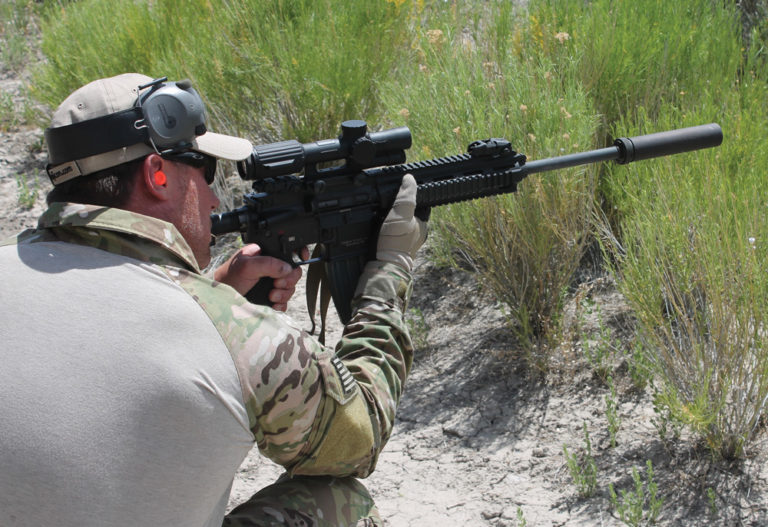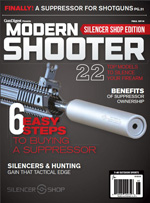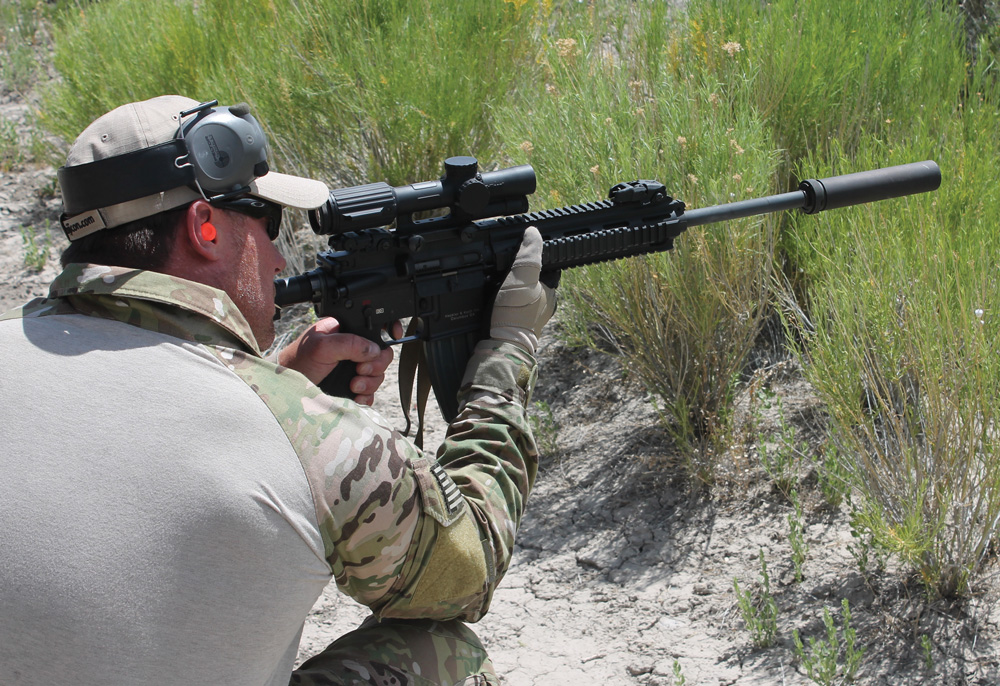
Many people are confused when purchasing a suppressor because they assume a suppressor’s caliber has to match the weapon’s caliber. In reality, you don’t necessarily care about caliber with suppressors.
What you care about is bore size and pressure, which is why they are categorized using bore size instead of caliber. The rule of thumb is if the suppressor’s bore is big enough for the bullet you want to shoot, and it can handle the pressure, then it should work with your weapon. (I say should because there are some combinations that won’t work. For example using a rifle suppressor on a pistol typically won’t cycle; and you definitely want a take-apart suppressor if you’re going to be using unjacketed rimfire ammo.)
After thinking through the implications, it becomes obvious that you can purchase a single suppressor to run on multiple weapon calibers and platforms, which brings a lot of versatility to the table. Unfortunately, nothing in life is free and there are some trade-offs with the one-suppressor-fits-all strategy. The main thing you’re giving up is efficiency.
Before going any further, let me explain what I mean when I talk about versatility and efficiency:
Versatility: The ability to use a suppressor on weapons with different calibers. For example, you could use a 7.62mm suppressor on a .308 bolt gun—as well as your 5.56mm AR15.
Efficiency: A higher efficiency suppressor will typically be quieter than a lower efficiency suppressor of the same size. In other words, a 7.62mm suppressor on a 5.56mm AR-15 would typically have to be quite a bit bigger than a 5.56mm suppressor to obtain the same level of suppression.
Also Check Out:
In most cases, 7.62mm suppressors are bigger than their 5.56 cousins; but, not by enough to provide the same level of suppression. Because of this, a 7.62 suppressor will typically be bigger, heavier and louder than a 5.56mm suppressor on the same weapon.
Another thing we’ve found is that first-round-pop tends to be significantly higher when using a suppressor with sub-calibers (i.e. 5.56mm caliber through a 7.62mm suppressor, or 9mm through a .45 suppressor).
We believe both approaches are right.
For some people, the allure of having one suppressor for multiple weapons is a definite advantage, and it’s hard to argue with that logic. On the other hand, it’s also hard to argue with wanting a suppressor that is smaller, lighter and quieter. In reality, both answers are right, so you just have to decide what works for you.
At the end of the day, if you do decide to start down the one-suppressor-for-multiple-firearms path, I would highly recommend picking something up that fits at least one firearm well. You can always pick up another suppressor in the future to cover the smaller caliber firearm(s) more effectively; but, you don’t want to be stuck with a suppressor that isn’t really what you would have preferred on the larger caliber firearm.
Source: SilencerShop.com
Related Video:
Learn More About Suppressors:
 Download the Fall 2014 Modern Shooter Magazine.
Download the Fall 2014 Modern Shooter Magazine.


![Best Concealed Carry Guns In 2025 [Field Tested] Wilson Combat EDC X9S 1](https://gundigest.com/wp-content/uploads/Wilson-Combat-EDC-X9S-1-324x160.jpg)


![Best 9mm Carbine: Affordable PCCs [Tested] Ruger Carbine Shooting](https://gundigest.com/wp-content/uploads/Ruger-Carbine-Shooting-100x70.jpg)
![Best AR-15: Top Options Available Today [Field Tested] Harrington and Richardson PSA XM177E2 feature](https://gundigest.com/wp-content/uploads/Harrington-and-Richardson-PSA-XM177E2-feature-100x70.jpg)
